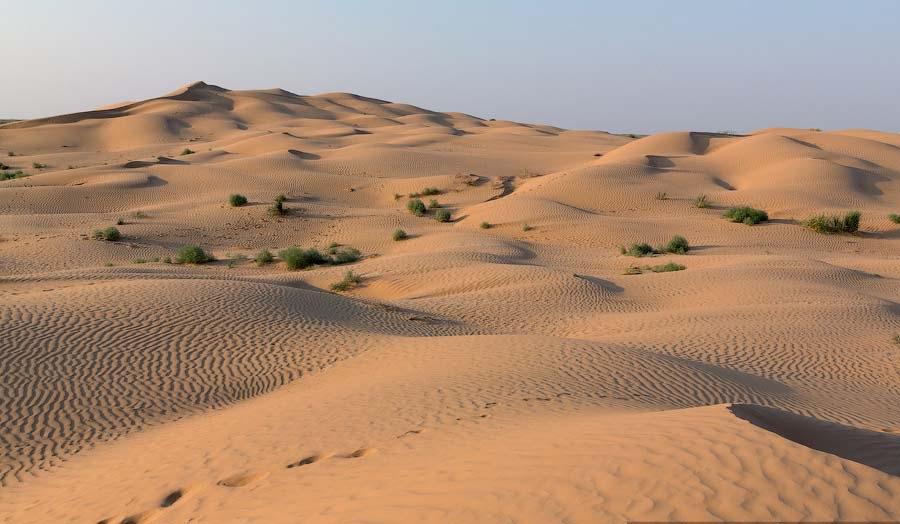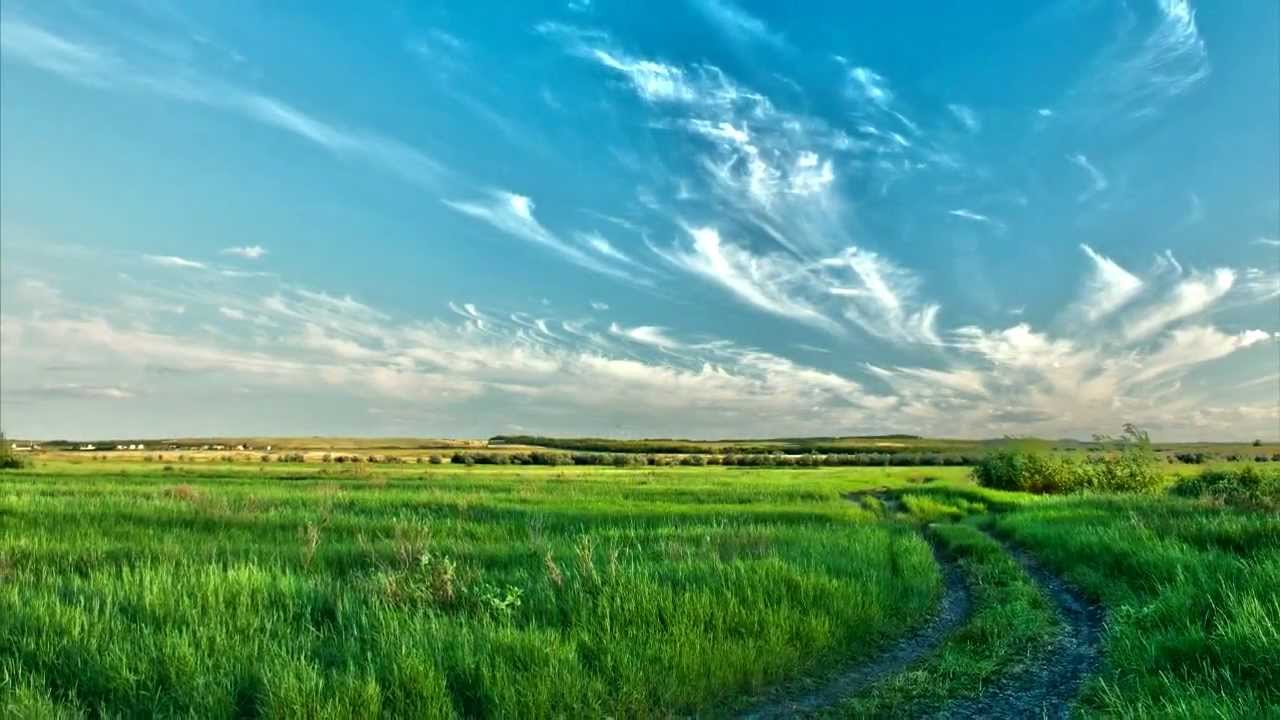The first question is what does one mean by Volga: Volga is a large river with many tributaries, the main one is Kama, which at some point (say, near the city of Perm), comes quite close to Ural mountains, see the two maps below.


So, if Volga means the entire "Volga basin", then indeed there is not much in between at the nearest point.
However, in November of 1942 the only place where German Army (nearly) reached Volga was at Stalingrad. If one goes straight from there to Chelyabinsk or Sverdlovsk (Yekaterinburg on the current maps) in the Ural mountains, along the "southern route" (between Volga and Ural river, by the cities of Orienburg and Ufa), then the distance is over 1000 miles, and over half of it is flat, but then the area becomes mountainous and rugged (after Orenburg), with lakes and a smaller tributary of the Kama river on the way (near the city of Ufa).
Remark. I am listing these two cities since these are the two major industrial centers in Ural mountains: Taking (one of) these would have been meaningful, unlike just reaching some random point in the mountain chain.
One should never underestimate Wehrmacht's hubris, but, if they had taken Stalingrad in Fall of 1942 and decided to go from there straight to Chelyabinsk/Sverdlovsk, their left flank would have been left exposed to the bulk of the Red army (further North). I am unaware of any German operational plans of this kind.
Now, if one were to go from Stalingrad to Central Asia (say, towards Alma-Ata), then there would be another major river to cross, namely Ural river.
Another point of reference is Barbarossa plan, where the goal was to reach "Archangel-Volga" line, from which Luftwaffe could attack the major industrial centers in Ural Mountains (Chelyabinsk, Sverdlovsk, etc.).

Regarding Chuikov's memoirs:
- Concerning "German column heading for Alma-Ata": I can guess what Chuikov was drinking when he wrote that passage (and it was not tomato juice). Who knows what and when was discussed by German and Chinese officials, but since 1937 China was fighting for its life against Japan (arguably, starting even earlier, in 1931) and was in no position to attempt another war, against Soviet Union. Moreover, whatever Sino-German cooperation existed, it collapsed in 1939:
Sino-German cooperation collapsed in 1939 due to the start of World War II in Europe, forcing many Chinese nationals to leave Germany due to increased government surveillance and coercion. The example Japan set in the Second Sino-Japanese War forced Hitler to replace China with Japan as the Nazi's strategic ally in East Asia. Following the Japanese Attack on Pearl Harbor in 1941, the Chinese declared war on Germany, which resulted in the Gestapo launching mass arrests of Chinese nationals across Germany.
So, for sure, the "Sino-German plan" Chuikov is alluding to, made no sense in 1942 no matter what Chiang-Kai Shek was thinking about his allies.
- Concerning Stalin's Order 227, "Not One Step back."
...Marshal of the Soviet Union, Aleksandr Vasilevsky, wrote: "...Order N 227 is one of the most powerful documents of the war years due to its patriotic and emotional content... the document was motivated by rough and dark times... while reading it we, were thinking to ourselves if we were doing everything it takes to win the battle."
My personal take: Vasilevsky's perspective on this was likely very different from the one of the military "on the ground," the ones who were involved in the actual fighting. One of the best (in my opinion) eyewitness accounts of the Stalingrad's battle is V.Nekrasov's "Frontline Stalingrad": Nekrasov was a junior officer during the battle. He does not ever mention Stalin's order 227 in the book. (The book has interesting history: it was awarded Stalin's prize in 1947. Stalin's name appears just once in the book...)
Regarding details of the order 227:
No commander had the right to retreat without an order. Anyone who did so was subject to a military tribunal of the corresponding seniority level.
The order established that each front must create one to three penal battalions, which were sent to the most dangerous sections of the front lines. From 1942 to 1945, a total of 422,700 Red Army personnel were sentenced to penal battalions as a result of courts-martial. The order also directed that each army must create "blocking detachments" at the rear that would shoot "panic-mongers and cowards". In the first three months, blocking detachments shot 1,000 penal troops and sent 24,000 to penal battalions. By October 1942, the idea of regular blocking detachments was quietly dropped.
Intended to galvanize the morale of the hard-pressed Red Army and emphasize patriotism, it had a generally detrimental effect and was not consistently implemented by commanders who viewed diverting troops to create blocking detachments as a waste of manpower.
The background is that Soviet leadership believed that in 1942 the main goal of German offensive was again to take Moscow. As the result, the southern flank was left under-protected with catastrophic consequences. (The failed Soviet offensive in the 2nd battle of Kharkov was another major reason.) The order was a failed attempt to stop rapid retreat on the Southern flank of the Red Army in Summer of 1942. (The retreat continued until sufficient reinforcements had arrived. For instance, Stalingrad front would have collapsed as well, if not for the timely arrival of General Rodimtsev's troops.)
One chapter in Chuikov's book is titled "There is no land across Volga:" This is just a slogan which would have been as empty as "No one step back," if not for the success at Stalingrad.
Ural mountains are mentioned in Chuikov's book few times, none of these involves a claim that Wehrmacht would have been able to march unimpeded straight onto the Ural Mountains if Stalingrad were to fall.
It is an interesting separate question about German operational plans after the (assumed) success of the modified "Case Blue," Operation Fischreiher. As you say in comments, the city of Astrakhan would be a natural target, so would be the areas North up to Volga river (which I vaguely recall but I do not remember the source).
Lastly, an irrelevant bit of historic trivia which might help one to appreciate more Alex's answer: This Soviet general (later, marshal) was the overall commander of the Southeastern/Stalingrad front in the 2nd half of 1942.
Edit. For the sake of completeness, these are the only relevant passages related to Ural mountains and Alma-Ata that one finds in the English translation of Chuikov's book "The battle of Stalingrad":
a. Page 248.
And what was happening there on the right bank? What lay ahead of us? What was going to happen? What? . . . I had only one thought in my head: why did we go on retreating, retreating, retreating? ... I wanted to shout aloud: ‘Enough! No more!’ When were we, instead of they, going finally to advance? When?
For the first time in many long months I felt sick at heart ... I sat thinking, feeling my cheeks grow damp, with a choking sensation in my throat. Klavdia also sat looking miserable, and, as if she was following my thoughts, said:
‘Where do we go now, then? The Urals ...’
I winced. I felt I had to protest. Not against Klavdia, but against my own faint-heartedness.
‘No, no!’ I answered in a whisper, almost inaudibly. ‘We ... we’ll win just the same!’ and my voice became firmer. ‘We are Russians, we are Soviet citizens ... Remember your history.’
‘I remember it,’ she answered in a toneless voice.
‘Have you forgotten where Napoleon got to, and what happened to him? Have you forgotten the Civil War? ...’
‘Do you really think I don’t know that?’ she interrupted.
‘I know it all. But that’s only with my mind. Here in my heart ...’ and she burst into tears, her head on my shoulder.
So, this is just an emotional exchange, nothing that deserves a specific geographic/military analysis.
b. Page 148.
Addressing the Reichstag at the end of September, Hitler boastfully declared: ‘We are storming Stalingrad and will take it—on that you can rely. If we have taken something we stay there.’
At the same time, in a conversation with some Turkish newspaper men, Goebbels said: ‘I always weigh my words when I speak, and I can tell you with conviction that by Christmas the Russian army will no longer be dangerous to Germany. In saying this I am sure that, as always, events will not disappoint me. I ask you to remember this in a few months’ time.’ Our soldiers did remember this on 2 May 1945, when they found the body of Goebbels in Berlin.
We know that the Kuomintang War Minister, saying good-bye to representatives of Nazi Germany in Chungking, agreed that German and Chiang Kai-shek forces would meet in Alma-Ata.
In 1942 Stalingrad was not only an important strategic
centre for Hitler, it was also a political centre, a factor
between Germany and some of the countries which were neutral towards the Soviet Union. That is why Hitler threw more and more divisions into the battle to win Stalingrad: he did not spare the blood of Germany’s soldiers.
My take on this: What was the meeting in Chungking, when did it happen, is there anything to this exchange beyond meaningless boasting? Did Chuikov simply forget that by 1942 China was no longer neutral towards USSR (in fact, China was on the side of the Allies and was officially at war with Germany)? Or, is Chuikov hinting here that China was planning to switch sides if Stalingrad were to fall? Since Chuikov was stationed in China before assignment to Stalingrad in Summer of 1942, he might have had some Soviet intelligence information about Chiang Kai-shek's plans in 1942, but there are not enough details for me even to guess. One more thing: Chuikov's book was first published in Russian in 1959 when the USSR-PRC relations were still quite good, so maybe the anti-Chiang paragraph was just pure propaganda. Tellingly, the paragraph is missing in the later Russian version available online; also in Chuikov's memoirs about his missions to China (published in 1983) Chuikov never mentions anything about "Alma-Ata" plans, but there is ample critique of Mao. My personal approach to all this is to use Hitchens's razor.
At the very least, it is clear that Chuikov did not convey here anything about specific German plans to move onto Alma-Ata after Stalingrad (if they had any).










